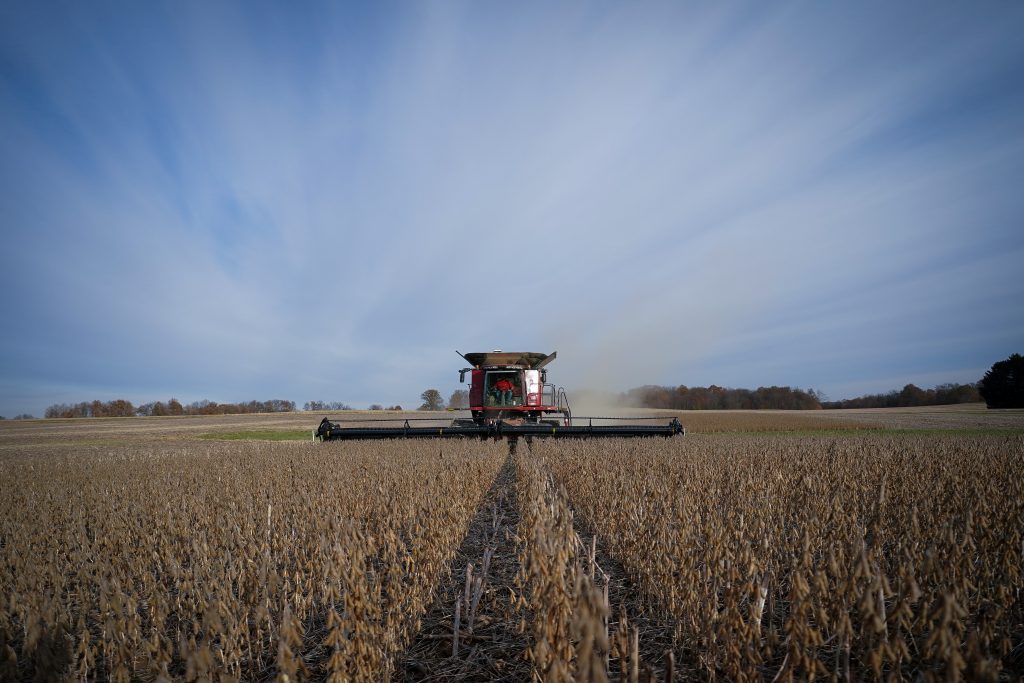American Commodities Soar on Chinese Buying
The prices for many key American agricultural commodities have skyrocketed in the last six months, and most market participants cite the re-emergence of Chinese buyers as the primary catalyst.

Investors and traders looking to read the inflation tea leaves may want to start following the agricultural sector a little more closely.
That’s because many of the agricultural commodities needed to fuel human civilization (from a sustenance standpoint) have surged to multi-year highs in 2021.
Consider, for example, that soybean futures are now trading near 6.5-year highs ($14.05/bushel) after touching 10-year lows ($8.33/bushel) as recently as last summer—a spike of nearly 70% in just nine months.
And soybeans aren’t the only “ag” making headlines in Q1 2021.
Corn prices are likewise trading at multi-year highs, having rallied from $3.08/bushel last summer all the way up to $5.49/bushel in late February. That’s a gain of nearly 80% in just seven months, with prices now pushing 7.5-year highs.
The story has been similar in wheat markets, where prices have risen from $4.75/bushel in the summer of 2020 to $6.59/bushel as of Friday, Feb. 26. Moreover, prices for cotton, sugar and rice are tracking similar upward trajectories.
Looking at broader market dynamics, one of the biggest factors contributing to these jaw-dropping gains appears to be the re-emergence of Chinese buyers in the U.S. system.
After backing off from American agricultural imports during 2018 and 2019, the Chinese charged back into the market during the second half of 2020.
It’s unknown whether the Chinese buying was due to a desire to make good on commitments tied to the Phase I U.S.-China trade agreement (signed at the beginning of 2020), or whether it was simply driven by need—due to dwindling supplies of food staples in the Middle Kingdom.
That question has yet to be answered definitively, but the good news for American farmers is that large purchases by the Chinese have extended beyond 2020 and into 2021. And the buying actually seems to have intensified.
For example, during the last week of January 2021, Chinese buyers accounted for the largest weekly purchase of American corn in history, as outlined in the tweet below.
For a little perspective, the largest ever one-day export #corn sale was 3.72 mmt or 146.4 million bushels to the USSR on January 9, 1991. We’ve topped that with sales to China this week, albeit not in one day. #oatt
— Arlan Suderman (@ArlanFF101) January 28, 2021
To put the significance of Chinese agricultural buying in perspective, consider that total global imports of corn into China are expected to range between 24 million and 30 million metric tons during 2021. That’s an astounding figure, given that estimates suggest the Chinese have imported a total of only 75 million metric tons over the last 60 years combined.
Chinese agricultural purchases haven’t been limited to grains, either.
Archer Daniels Midland (ADM) reported that China signed a contract with the American agricultural giant to purchase 200 million gallons of ethanol during the first six months of 2021. That figure represents not only a record contract amount of ethanol sales for six months, but also for any calendar year in U.S. history.
Altogether, it’s been a boon for American farmers—and rural communities in the United States—because the prices of most agricultural products in America are now trading well above break-even. That’s a huge development as it relates to American farm profitability.
As an example, it’s believed that most American wheat farmers can turn a profit when prices are trading above $6/bushel. With prices currently trading closer to $7/bushel, most farmers are likely breathing a big sigh of relief.
As most will likely recall, the agricultural sector experienced a shake-up in 2017 when former President Donald Trump initiated his trade war with China. Back then, Trump and his advisors decided to levy tariffs against Chinese imports with the hope of gaining leverage in broader trade negotiations.
In response to those tariffs, the Chinese greatly reduced their purchases of American agricultural commodities, which in turn contributed to a drop in prices.
The impact on American farmers was so severe that the U.S. government was forced to provide assistance to the sector starting in 2018. And the pandemic only served to exacerbate the problem. It’s estimated that during 2020, farmers received upwards of $46.5 billion in assistance—the largest government-to-farm payout in history.
However, the re-emergence of Chinese buyers in the market, and more importantly the rebound in prices, is expected to greatly reduce the need for government aid in the agricultural sector during 2021.
The big question now is whether the export market for American farm products will hold up through the end of the year, and continue into 2022. Visibility into agricultural export projections is especially complicated because of the strong potential for geopolitical flare-ups between the world’s two largest economies.
So far, President Joe Biden has tread carefully in terms of his new administration’s public approach to China. One tactic that Biden and his trade advisors have advocated for is working more closely with U.S. allies to coordinate their approach to China, to build more leverage in negotiations.
As such, China’s surging purchases of American goods may be a signal that the Chinese are trying to build good faith. That means if the existing trade deal negotiated by the Trump administration is kept in place, then it’s likely the Chinese will request a rollback of some tariffs during Phase II negotiations.
China may also be trying to curry favor with the American public (via farmers in rural areas) in hopes of forcing the American government to look the other way on politically charged topics, such as the plight of the Uighurs or the mainland’s tightening grip over Hong Kong.
It’s certainly interesting to think about how Chinese money is currently replacing government aid in the U.S. farm sector, and how that development fits on the broader U.S.-China chessboard.
The multifaceted, complex nature of the U.S.-China relationship makes future predictions hard to come by—agriculturally, or otherwise.
Rising food prices could also have a negative impact on the U.S. economy from an inflation standpoint, which is another good reason to monitor the agricultural sector closely in the coming weeks and months.
To learn more about trading the ag sector, readers are encouraged to review a recent installment of Futures Measures on the tastytrade financial network. More information on the iconic wheat vs. corn spread is also available via this link.
For daily updates on everything moving the markets, readers are also encouraged to tune into TASTYTRADE LIVE.
Subscribe to Luckbox in print and get a FREE Luckbox T-shirt! See SUBSCRIBE or UPGRADE TO PRINT (upper right) for more info.
Sage Anderson is a pseudonym. The contributor has an extensive background in trading equity derivatives and managing volatility-based portfolios as a former prop trading firm employee. The contributor is not an employee of Luckbox, tastytrade or any affiliated companies. Readers can direct questions about any of the topics covered in this blog post, or any other trading-related subject, to support@luckboxmagazine.com.



















